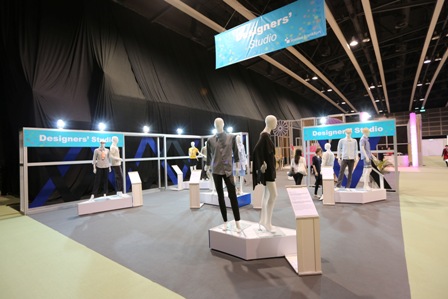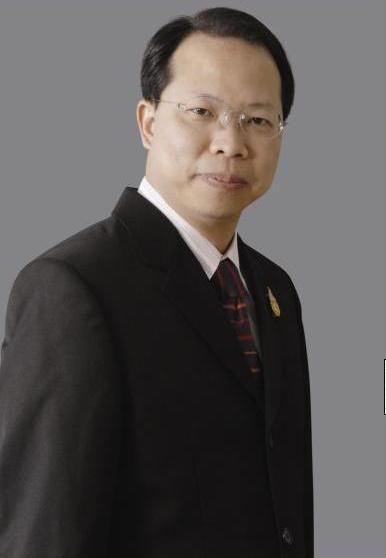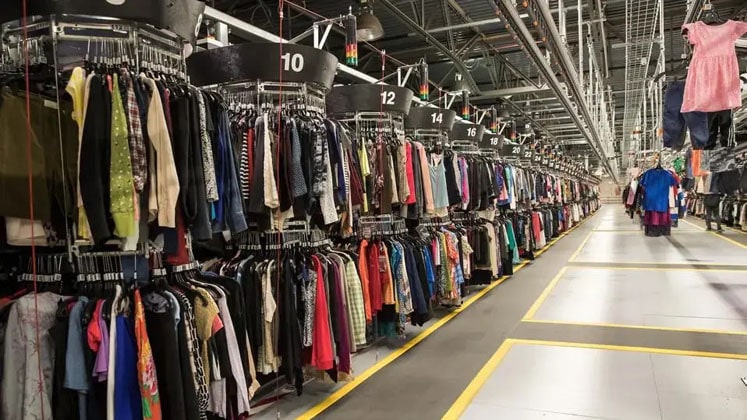FW
Jeanologia of Spain, the world leader in sustainable development of technologies for garment finishing, has now strongly positioned itself in the South American market. After bagging the WGSN Global Fashion Award for best sustainable design team in the world, the company participated in Colombiatex held on January 21 and 22 and also in the Première Vision Brazil, where it presented its latest technologies.
At Colombiatex, the company displayed the Flexi HS laser technology, eco-washing G2, E-soft and E-Mark software. Jeanologia designer worked with Colombian designers using the software E-Mark for getting the highest returns on their production.
At the Premiere Vision Brazil, Jeanologia exhibited the E-Mark software developed exclusively for the apparel design laser intended for more efficient production, allowing creation and improvement of designs on jeans. This is a user-friendly software, fast to design and multilingual. It has also a constantly updated database, artificial vision control, design preview, production time estimation and analysis of remote control. It helps optimize productivity and minimize production errors.
Leading brands in the Brazilian market such as Calvin Klein, John John, Colcci, Forum, Carmin, Damyller, Lança Perfume, Morena Rosa, Osmoze Stream Zara, Renner C & A, Marisa and Oppnus Sawary and Colombian brands such as Army, Be Kool, Pronto, Studio F, Kenzo, Willdy, Atmosfere, Supreme, CI Jeans, Chevignon and Tennis have installed sustainable technologies developed by Jeanologia.
Over last two decades, Jeanologia has been developing ecological textile technologies such as textile laser, oxygen and ozone garments washing and garment softening by nano bubbles. Jeanologia products and solutions are currently being used in more than 45 countries, including México, Colombia, Brazil, USA, Germany, Italy, Portugal, India, China, Russia, Japan, Morocco and Bangladesh. Major brands such as Levi’s, Polo Jeans, Abercrombie & Fitch, Edwin Japan, Pepe Jeans, Diesel, Hilfiger Denim, Salsa Jeans, and other large retailers such as GAP, Uniqlo, Zara, use techniques and technologies developed by Jeanologia.
www.jeanologia.com
At the recently concluded Heimtextil exhibition in Frankfurt, textile technology was the focal point with exhibitors showcasing technological innovations in the field of home textiles. The event hosted 2,658 exhibitors from 62 countries attracting around 66,000 visitors over the four days, with 66 per cent coming from countries other than Germany. The most represented international visitor nations included Italy, China, Turkey, the UK, the US, France, India, Spain, the Russian Federation and Poland.
With the newly emerging trends for industrial-scale digital printing of home textiles, Heimtextil saw presence of leading digital textile printing technology, and software and design providers exhibiting in the Design & Technics Hall.
While SPG Prints, Netherlands showcased its pigment ink technology, Reggiani Macchine, Kornit Digital, POD Iberica and Durst & HP exhibited their latest machinery range.
There was also an informative conference program on digital textile printing theme organised by the World Textile Information Network. The European Digital Textiles conference included presentations from some of the pioneers of digital textile printing for home textiles, as well as industry observers, strategists and creative thinkers. This year’s Heimtextil combined the best of business with design innovation and technical advancements in the field.
www.heimtextil.messefrankfurt.com
Owing to shortage of fairly priced cotton, dyes and chemicals along with shortage of capital and absence of modern cloth processing centres, several handloom units in Bangladesh are facing closure. According to the industry estimates, around 1,92,000 handloom units out of 0.5 million in the country have closed down and many others are on the verge of shutting due to above mentioned reasons.
Handloom is the country’s second largest labour intensive sector for rural employment after agriculture. Over 1.5 million people are employed in the sector directly or indirectly. The segment has been seeking government intervention in reviving the units. Apart from competitively priced raw material, handloom owners are not getting financial support or whatever little they are getting is not enough to meet the needs. The government had last supported in 1998 sanctioning Tk 500 million to disburse at the rate of Tk 12,000 per head among weavers as loan. But weavers claim that the amount is not sufficient to meet even their minimum requirement.
However, Bangladesh Handloom Board has been taking initiatives like the BMRE (balance, modernise, rehabilitate and expand) of the cloth processing centre (CPC) in Narsingdi at a cost of Tk 297.21million. It has also initiated to establish another three different types of service centres at a cost of Tk 460.52 million.The board proposes to provide facilities like washing, dyeing, calendaring, printing, finishing and some other facilities to the weavers.
www.bhb.gov.bd
The Association of Italian Textile Machinery Manufacturers (ACIMIT) has published the second edition of ‘Green Guide’ providing a summary of actions taken by Italian textile machinery firms in the field of sustainability, in terms of savings resources used during the textile production process.
The Green Guide lists the technology innovations that allow machine users to cut production costs while adopting environmentally friendly measures. In addition to global competition, which is pushing towards more economic production processes, many countries have set up green incentives for the acquisition of more eco-friendly, energy efficient machinery, the association reports. This drive from the top towards sustainable technologies is seen as yet another strong motivation for Italy’s machinery builders.
The Sustainable Technologies project brings together different promotional and communications activities intended to act as a sounding board for Italy’s textile machinery businesses. With 7,000 copies in print, the Green Guide will be distributed at major industry trade fairs, in which ACIMIT will take part together with its associated members during the 2014. A print version will also appear in Chinese, distributed in 1000 copies at the upcoming ITMA ASIA+CITME 2014 that will be held from June 16-20, 2014.
www.acimit.it
The Textile Institute has announced that its next World Conference will take place in at the Lake View Garden Hotel Wuhan, China, from November 2 to 6, 2014. Jointly organised by The Textile Institute and Wuhan Textile University, the organisers have asked for submissions of original papers for oral and poster presentations at the 89th Textile Institute Word Conference (TIWC 2014).
The conference provides opportunities for industry, academia, research professionals and students around the world to share their recent research achievements and exchange ideas for future collaborations. Submissions of original work is expected to be related to research categories like clothing manufacturing, design, fashion, footwear product and materials innovation, education and training in textile and apparel, future trends and visions, global business, marketing and management in textile and clothing, healthcare and medical textiles, innovation in textile colouration and finishing, natural fibres and products, personal protective equipment and composites, quality control, testing and evaluation, sustainability in textiles, smart fabrics and wearable technologies and technical textiles and material engineering, among others.
Abstracts have to be sent before April 15, 2014. The notification of abstract acceptance will be announced on April 30. Full papers are expected to be submitted by July 30, 2014, and the notification of full paper acceptance will be made on August 15, 2014.
Founded in 1910, the Textile Institute is active in textiles, clothing and footwear. The Institute has individual and corporate members in over 80 countries, with the membership covering all sectors and all disciplines in textiles, clothing and footwear.
www.texi.org
Every year, Thailand's BIFF & BIL sees a large number of apparel manufacturers visiting the fair. Yuttana Silpsarnvith, TGMA speaks to Fashionatingworld about the activities conducted by TGMA to promote Thai trade.
What are the highlights of the show?
We had three activities this time. One was the Designer Room, where around 50 new designers showcased their design strength. Second was the AFF conference where six countries were invited to have fashion shows, this is a big conference. Thirdly we showcased the next season’s trends for Thailand. The fair is organized by DITP. TGMA takes care of apparel manufacturers and exhibitors the rest are our members for whom we PR help them connect with buyers.
Do you see more buyers from Japan?
There has been an increase in orders from Japan and ASEAN countries like Singapore and Malaysia.
What was the visitor turnout? Has the number of exhibitors decreased?
Exhibitors have decreased because of Thailand’s political problems. Businessmen, tourists, foreigners do not want to come. For example Hong Kong government had given out a cautionary note saying it is critical, meaning they do not want people to come here.
BIFF & BIL 2014 had 15 per cent less visitors compared to last year. Political problems and demonstrations were the main reasons. But this is better than our forecast which was 20 to 30 per cent less. The first day saw 15 per cent less turnout. Local visitors were less, but there was an increase in foreign visitors, especially suppliers. There were many Japanese customers and this time 12 Japanese brand had booths for the first time. These are brands who want to expand to Thailand and Asia. They said it was successful and next time they will have 20 booths for Japan. Korea too is interested. This year they had eight booths but next year they will come with more textiles and aim to expand here. Japan is a big buyer with textile association, apparel association and fashion association. All combined the figure was more than 300 Japanese.
In terms of business how is Thailand industry doing?
We are talking about relocation of apparel industry especially big and medium size factories. More than 40 companies have shifted from Thailand to Cambodia, Myanmar and Vietnam.
Is it a good or bad sign?
The positive fallout is, we can expand our business because we do not have much human resource, people are getting old for production and we pay higher wages compared to other neighbouring countries so we move out, use cheaper resource and then export. The company remains in Thailand, we keep the R & D material, supply chain in Thailand and then send out and export from there. We have FTA with ASEAN countries. Cambodia, Laos and Myanmar get the GSP from Europe for everything. So there is zero duty to EU and 5 per cent duty to US compared to Thailand. Thailand is about 10 per cent for EU and 30 per cent for US. Being in Cambodia we can take advantage of this.
What is the size of Thai apparel industry?
We export apparels worth $3,000 million and textiles worth $4,600 million. We only source the local consumption and import textile fabric especially functional fabrics. Automotive textile, functional textile for uniform, high performance polyester etc are imported mainly from Korea and Taiwan. We are waiting for Thai-India FTA and awaiting (BIMSTEC) which is FTA together which will happen next year. Thailand falls in Asia and South Asia as well. India is good in cotton, mercerized cotton, yarn dye and we wish to share it for dyeing, fibre.
What kind of growth do you anticipate for Thailand’s textile and apparel industry?
In the next five years, we have to relocate medium and small size quickly. The first two or three years it is the big size that has to move out but in the next five years it is going to be the smaller size factories that will move out. We have to facilitate them.
After relocation, we need to develop trading firms, R&D in Thailand, we need to develop the product and development centre, training centre in Bangkok. So customers will come to Thailand and place orders, develop in Thailand but the production will be done outside. The turnover will come to Thailand as they are Thai owners.
Has Thailand made investments in these countries?
Thailand will invest mainly in CLMV (Cambodia, Laos, Myanmar and Vietnam) for apparel companies. The company invests in CLMV because the customer is in EU. American customers move to Vietnam. Korea also wants to invest more in textile fibres in Thailand as we are good in automotive business. One big company from Japan wants to make automotive textiles here. Korea wants to make a printing company here and another from Japan wants to start a dyeing mill.
How is your business with China?
Not so good. We dropped 6 to 8 per cent in import and export. We tried to increase the number of exports with China for two years but were not successful because of border trade between Laos, Myanmar and with Thai connecting to South China they grow very fast. They may go to Thailand without showing the number of imports. It’s a grey market and this number is increasing from China to all these countries especially to Thailand.
Could you tell us about the changes taking place in global sourcing?
Sourcing is going to get complicated because of FTAs between countries. Canada and Australian customers are now coming back to Thailand. They are moving out from India and China as China is not cheap. Many new customers are starting to find new sources.
Countries like India, Thailand, Japan, Korea, ASEAN should collaborate and get stronger. ASEAN part plus three is China, Japan, Korea and other three is Australia, New Zealand and India. The talks are on for general business with FTA and dilation of bigger group and countries. Asia will become big once FTA is in place. It is global trend we have to compete with America and EU finally.
What are the other activities of TGMA?
We arranged the AFF conference, hosted AFF and arranged six seminars, four workshops in the FTPC board. Business matching is also done. Independently we have trade missions. This year we have four country trade missions to Japan, Korea, Indonesia and Philippines. The objective is to sell Thailand’s products and boost production. Our team is present in Interstoff and we have seminars almost every two weeks in our office.
What are your plans for next BIFF & BIL?
We will try to make BIFF & BIL more interesting. Thailand’s image is not good right now, we want to improve that first.
 Interstoff Asia Essential Spring-2014, a leading trade event for cutting-edge fabrics was held from March 19 to 21, 2014 at the Hong Kong Convention and Exhibition Centre. Over 220 exhibitors showcased a broader range of fashionable, functional and eco fabrics and garment accessories at the event this year.
Interstoff Asia Essential Spring-2014, a leading trade event for cutting-edge fabrics was held from March 19 to 21, 2014 at the Hong Kong Convention and Exhibition Centre. Over 220 exhibitors showcased a broader range of fashionable, functional and eco fabrics and garment accessories at the event this year.
The four well-received country and region pavilions from China, Japan, Korea and Taiwan were present once again, while the first two increased in size by 13 per cent in total. Wilmet Shea Deputy General, Messe Frankfurt (Shanghai) revealed that there were 221 exhibitors this year compared to 229 in the last summer show and 175 in the September show. Shea said, “The visitor turnout on the first day was 1,800 which included China, Japan, Korea, Australia, Hong Kong and Taiwan though overall number of buyers during three day event expected was over 7,000. There VIP delegations from China, Saudi Arabia among other locations also graced the event with their presence.” Moreover, the Accessories Zone saw a larger presence with new exhibitors offering visitors a wider selection of products.
Showcasing upcoming trends
The fair provided meaningful insights into upcoming fashion trends and advanced  technologies apart from the latest fabrics and blends. The Fabrics to Fashion Walk had a series of fashion parades featuring nine up-and-coming designers from Hong Kong, Macau and Taiwan this year.
technologies apart from the latest fabrics and blends. The Fabrics to Fashion Walk had a series of fashion parades featuring nine up-and-coming designers from Hong Kong, Macau and Taiwan this year.
Another first was ‘Spotlight on Hong Kong’, the first catwalk show, featuring Hong Kong designers and brands, including Binar by Erik Cheung, Kenax Leung, Losting by Ostin Lo, SKETCHΔROUND and WH. The second fashion parade ‘Snapshot of Macau and Taiwan’ displayed creative works from Estawom, L.A.C.Y. and Worker Playground came to life under the spotlight, co-organized by the Macau Productivity and Technology Transfer Centre and the Taiwan Textile Federation. MODÈLE de PRUDENCE featured alone in the third parade: ‘Harmony & Conflict by MODÈLE de PRUDENCE’.
Hong Kong, the fashion hub
One of the main highlights of the event was the announcement by Felix Chung, Member of Legislative Committee during the dinner session that John Tsang, Chief Financial Officer with government of Hong Kong had approved the presentations made by Cheng on promoting Hong Kong as a fashion hub and boosting fashion in the city.
Seminars on latest trends
The event also held ‘Design and Trends’ seminars by well-known experts and leading trend forecasters. The seminars covered megatrends, men’s and women’s wear trends, and fashion trend applications in the Mainland China market. Speakers at the Innovation Technology seminars were fibre suppliers, such as Lenzing Fibers (Hong Kong) and Bayer Material Science, and shared their practical experience with the audience. Integration of the most advanced technologies into textiles was seen at the Research and Education Zone, where special displays and fabric samples were displayed. Further, the Designers’ Studio featuring award winning outfits from the EcoChic Design Awards, sponsored by Redress demonstrated how to minimize waste in fashion designs. It also featured innovative garments from Lenzing Fibres (Hong Kong), 12 outfits designed by six Hong Kong designers/brands that were featured in the Fabrics to Fashion Walk. The Research and Education Zone at the event was joined by a new partner this year. The Taiwan Textile Research Institute (TTRI) displayed latest technologies on research and development for textiles.
Trend Forums: Spring/Summer 2015 trends
The Trend Forum was back with a new format featuring a fashion showcase and parade for the first time. Designed by the Directions Trend Committee comprising of four leading trend forecasters from New York, Milan, Paris and Tokyo, the Forum gave participants a better understanding of the trends that would be popular next season by utilizing fabrics sponsored by exhibitors.
Several Chinese textiles and apparel companies are looking at opportunities to set up offshore manufacturing zones in Sri Lanka under the proposed Sri Lanka - China Free Trade Agreement. Conference and Exhibition Management Services, Global Operations Group Director, S S Sarwar said that with increasing competition, Sri Lanka industries can expand their share in the global market and at the same time attract more foreign investment for highly potential industries, specially the garments and textile industry.
Garment factories in Bangladesh are managed by Sri Lankan middle and senior management staff. Sri Lankan apparel exports surpassed $4 billion and it is expected to increase further. The total number of garment factories in Sri Lanka is estimated to be around 450. Even though Sri Lanka’s apparel industry is small in size compared to Africa and Bangladesh. Sri Lanka’s close proximity to major trade routes and the hassle free Colombo port will immensely help to take the industry to next level.
As per Sarwar, Sri Lankan garment factories are following environmental friendly employment practices and are operated in good working conditions compared to their counterparts in the region. Sri Lanka is the world’s largest exporter of women’s lingerie is also blessed with high calibre resource people. However, the industry needs latest technology and other resources to stay up-to-date with the quality of competitors existing worldwide. Sri Lanka has the potential to expand their share in markets overseas while attracting more foreign investment in the highly potential garments and textile industry with the ever-increasing competition in the world market.
Sarwar expects the textile and apparel sector to immensely benefit through Sri Lanka-China Free Trade agreement to be signed in the near future.
www.cemsonline.com
Bangladesh's commerce minister Tofail Ahmed, says the government has decided to provide cash incentive at the rate of 0.25 per cent to the readymade garment (RMG) industry to overcome the fallout of Rana Plaza collapse and Tazreen Fashion fire. The government has also decided to reduce tax at source to 0.3 per cent from the existing 0.8 per cent. In case of new products and market explorations, the cash incentive has been enhanced to 3 per cent up from 2 per cent which will help the RMG sector save at least Tk 11.00 billion.
Emphasising on the need for developing garment villages in the future, he added that the process of setting up a garment village in Chittagong at the earliest possible time will commence soon and China has agreed to provide soft loans to set up the garment village.
He also informed that the contribution of RMG sector is $22 billion dollars in the overall export earnings of $30 billion in the country. Export earnings from the RMG sector would stand at $30 by 2015. The sector is expected to fetch as much as $50 billion from export of readymade garments by 2021.
www.bgmea.com.bd
As per China's Ministry of Industry and Information Technology (MIIT) report, China's textile industry will maintain steady growth in the year 2014. The report added that a series of fine-tuning of policy measures gradually turned up the growth rate of industrial production in the second half of 2013.
Business conditions have improved and there is a significant increase in market confidence, due to steady rise in industrial economy development, which has laid a good foundation for stable and healthy development of the national economy. However, the production of textile industry was sluggish in 2013. From January to November 2013, China’s textile sector grew by 8.5 per cent year-on-year. The production of yarn, fabric and apparel increased by 8.3 per cent, 5.6 per cent and 0.7 per cent, respectively, which were all lower than the increases in production, registered in 2012.
However, textile export growth was stable. In the first 11 months of 2013, textile industry exports grew by 7.2 per cent, which was about 4.7 per cent higher than the growth rate observed last year. In the first, second and third quarters, China’s textile exports increased by 6.3 percent, 8.5 percent and 6.1 percent, respectively, followed by an increase of 5.9 percent and 8.1 percent in October and November 2013.













